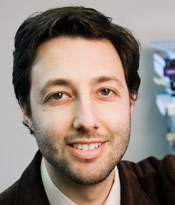Scott Tainsky
Assistant Professor
Recreation, Sport and Tourism

What are the values of sports fans? That's a question Scott Tainsky tries to answer by examining such things as attendance and
television broadcast demand for professional sporting events. Dr. Tainsky joined the Department of Recreation, Sport and Tourism
in 2008, after completing his Ph.D. in Sports Management at the University of Michigan.
In a paper published in Social Science Quarterly, Dr. Tainsky and University of Michigan professor Jason Winfree examined
the impact on attendance of adding international players to Major League Baseball teams. Citing a dearth of research on
international players, they were curious as to whether the effect would be similar to that which occurred when African American
players joined major league teams. That research showed that attendance increased significantly in the decade immediately
following integration, and gradually leveled off. In their study of the period from 1985 to 2005, however, Dr. Tainsky and
Dr. Winfree found that the addition of foreign-born players initially had a negative effect on consumer demand. That effect
gradually turned positive, so that by 2000, adding international players substantially increased stadium revenue.
Dr. Tainsky has also examined the effects of domestic population migration and steroid policy on consumer demand for
professional sports events. In collaboration with Recreation, Sport and Tourism colleague Monika Stodolska, he is investigating
whether the experience of Latino immigrants in the United States impacts their choice of team in international soccer matches.
The professional sport industry is a $20 billion industry, Dr. Tainsky says, which is roughly comparable to the cardboard
box industry. Yet with its own section in the newspaper, it's clear that sport occupies a bigger place in our minds than
finances alone might dictate. "There is a community built by sports–the water cooler conversation–so people are choosing to
invest their time this way," he said. "We have to ask, are we giving the public what they want? Are we giving them the games
they want on television in order to bring together these communities?" Undergirding all his research, he says, is the desire
to disseminate information that will allow fans to reflect on their values and make informed decisions.